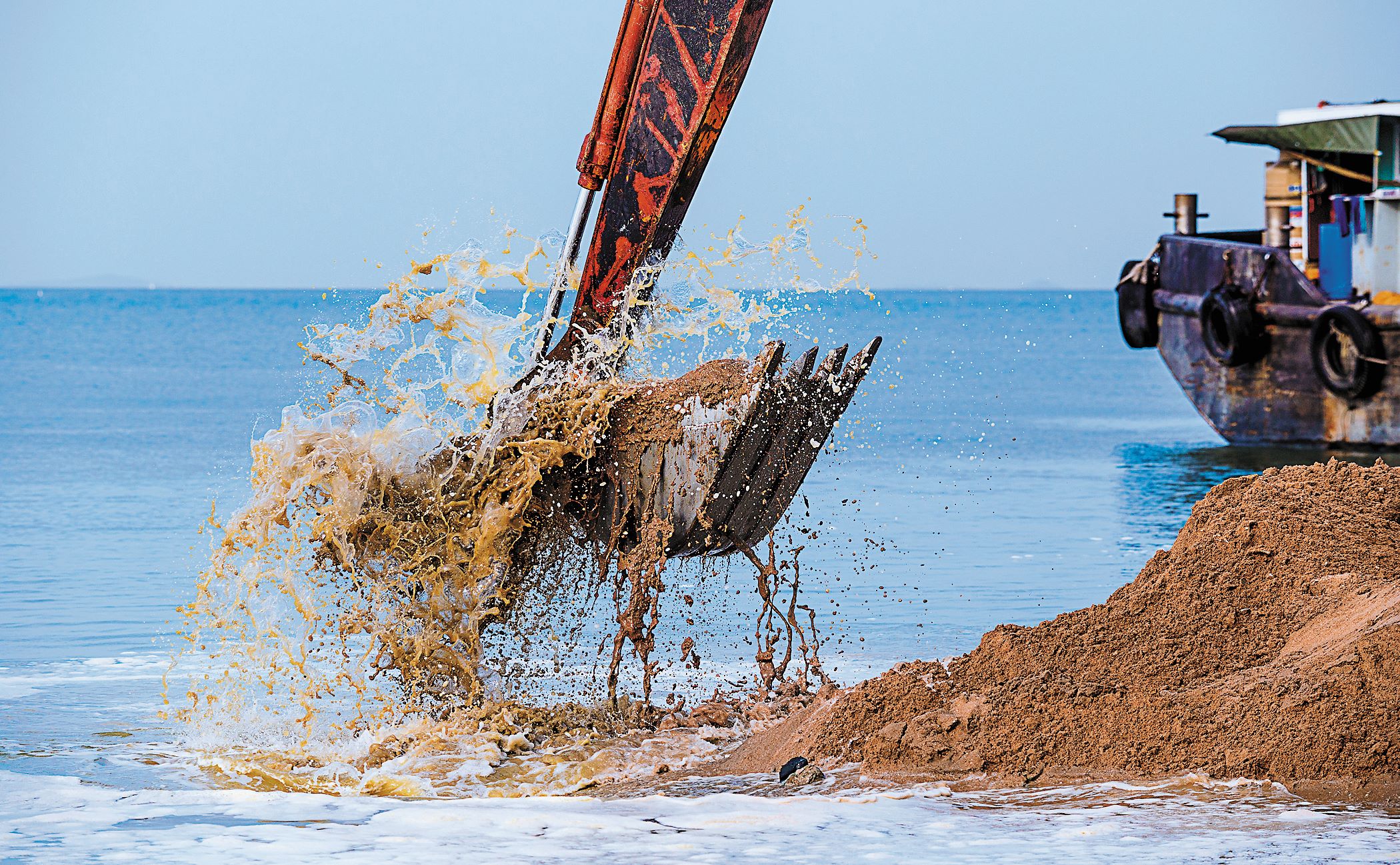While removing a few grains of sand from a beach – known as sand mining – may seem like an insignificant act to many, the experts are categorical: it is absolutely vital that nothing, however minute the quantity, is taken away. The sand and stones, they explain, help protect our coasts from erosion and act as breakwaters to protect the land from flooding. They also point out that anthropogenic interventions can prove fatal, because any disturbance to the broader ecosystem poses a direct threat to the local fauna.
Speaking to TA NEA, Professor Georgios Papatheodorou, who teaches Geological and Environmental Oceanography at the University of Patras, notes that the biggest threat to our coasts today is the systematic removal of sand. “The coast is an extremely fragile environment, the boundary between the sea and the land, and it is extremely mutable, meaning there are serious erosion problems there. Sand removal is unacceptable in any case: it certainly doesn’t help in any way, and actually causes enormous issues which the coast will take centuries to recover from,” he explains, adding: “Even in rivers where we extract sand and gravel systematically and as a matter of course, we are effectively removing material that would otherwise have eventually ended up on our shores. In effect, we’re cutting off the supply of sand to our coasts and accelerating their erosion. And new problems in coastal biodiversity are emerging as a result.”
Sand mining – Raw material for the construction boom
The issue is clearly not limited to people taking souvenirs back from their holidays; in fact, scientists warn that the global demand for sand is spiraling out of control. Statistics show that we use 50 billion tons of sand per year worldwide—more than double the amount produced by every river in the world combined over a 12-month period. To put it in perspective, that’s equivalent to 18 kg of sand per person per day, or a wall 27 meters high and 27 meters wide around the equator.
Sand is one of the key ingredients that make contemporary life possible, and it is becoming depleted by excessive use.
This is mainly because the world’s cities have exploded in number and size in recent years, especially in the developing world.
According to the Freedonia Group, an industry market research firm, demand for construction aggregates has now passed the 52 billion tons a year mark, while it is estimated that sand contributes $70 billion annually to the global economy.
At the same time, over 90% of the world’s beaches have shrunk by an average of 40 meters since 2008—a period of just 16 years!—and many popular vanishing beaches are having to replace the sand they lose with… imports.
The black market in India
In India, sand has become so sought-after that organized crime has got involved in illegal sand mining extraction and sale on the black market. It is estimated that the Sand Mafia employs around 75,000 people in the theft and trafficking of sand, mostly from riverbanks, while divers working up to 12 hours a day are paid as little as $15 per boatload.



